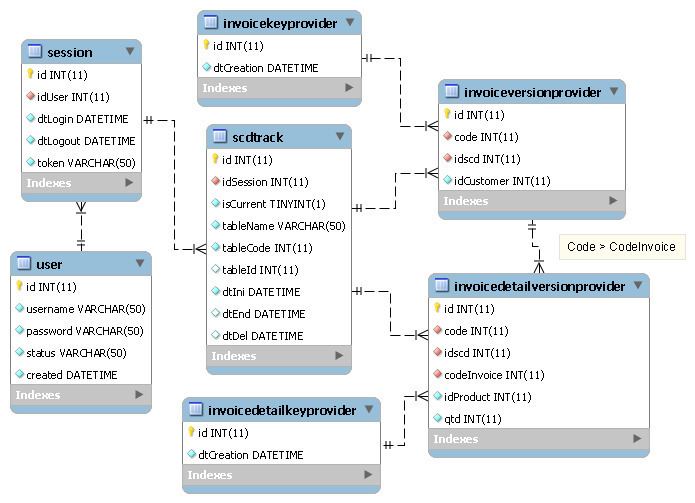 | ||
In relational databases, the Log trigger or History trigger is a mechanism for automatic recording of information about changes inserting or/and updating or/and deleting rows in a database table.
Contents
- Definition
- Compatibility notes
- Data warehousing
- IBM DB2
- Microsoft SQL Server
- MySQL
- Oracle
- Historic information
- Advantages
- Disadvantages
- Getting the current version of a table
- Getting the version of a table in a certain point of time
- Getting the information of an entity in a certain point of time
- Getting the history of an entity
- Getting when and how an entity was created
- Immutability of primary keys
- Alternatives
- References
It is a particular technique for change data capturing, and in data warehousing for dealing with slowly changing dimensions.
Definition
Suppose there is a table which we want to audit. This table contains the following columns:
Column1, Column2, ..., Columnn
The column Column1 is assumed to be the primary key.
These columns are defined to have the following types:
Type1, Type2, ..., Typen
The Log Trigger works writing the changes (INSERT, UPDATE and DELETE operations) on the table in another, history table, defined as following:
As shown above, this new table contains the same columns as the original table, and additionally two new columns of type DATETIME: StartDate and EndDate. This is known as tuple versioning. These two additional columns define a period of time of "validity" of the data associated with a specified entity (the entity of the primary key), or in other words, it stores how the data were in the period of time between the StartDate (included) and EndDate (not included).
For each entity (distinct primary key) on the original table, the following structure is created in the history table. Data is shown as example.
Notice that if they are shown chronologically the EndDate column of any row is exactly the StartDate of its successor (if any). It does not mean that both rows are common to that point in time, since -by definition- the value of EndDate is not included.
There are two variants of the Log trigger, depending how the old values (DELETE, UPDATE) and new values (INSERT, UPDATE) are exposed to the trigger (it is RDBMS dependent):
Old and new values as fields of a record data structure
Old and new values as rows of virtual tables
Compatibility notes
GetDate() is used to get the system date and time, a specific RDBMS could either use another function name, or get this information by another way.OLD and NEW. On a specific RDBMS they could have different names.DELETED and INSERTED. On a specific RDBMS they could have different names. Another RDBMS (DB2) even let the name of these logical tables be specified.BEGIN and END keywords.Data warehousing
According with the slowly changing dimension management methodologies, The log trigger falls into the following:
IBM DB2
O for old values and N for new values.Microsoft SQL Server
DELETED and INSERTED.MySQL
Old and New.Oracle
:OLD and :NEW.:NEW record that define the primary key (when a DELETE operation is performed), in order to avoid the insertion of a new row with null values in all columns.Historic information
Typically, database backups are used to store and retrieve historic information. A database backup is a security mechanism, more than an effective way to retrieve ready-to-use historic information.
A (full) database backup is only a snapshot of the data in specific points of time, so we could know the information of each snapshot, but we can know nothing between them. Information in database backups is discrete in time.
Using the log trigger the information we can know is not discrete but continuous, we can know the exact state of the information in any point of time, only limited to the granularity of time provided with the DATETIME data type of the RDBMS used.
Advantages
Disadvantages
Getting the current version of a table
It should return the same resultset of the whole original table.
Getting the version of a table in a certain point of time
Suppose the @DATE variable contains the point or time of interest.
Getting the information of an entity in a certain point of time
Suppose the @DATE variable contains the point or time of interest, and the @KEY variable contains the primary key of the entity of interest.
Getting the history of an entity
Suppose the @KEY variable contains the primary key of the entity of interest.
Getting when and how an entity was created
Suppose the @KEY variable contains the primary key of the entity of interest.
Immutability of primary keys
Since the trigger requires that primary key being the same throughout time, it is desirable to either ensure or maximize its immutability, if a primary key changed its value, the entity it represents would break its own history.
There are several options to achieve or maximize the primary key immutability:
Alternatives
Sometimes the Slowly changing dimension is used as a method, this diagram is an example:
